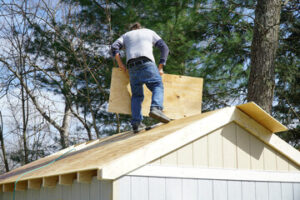
When it comes to dumpster rental, there are many different options available. Some are more effective than others. It is important to develop a marketing strategy that will generate high-quality leads and convert them into customers.
There are many factors that can influence pricing for dumpster rentals, such as the size of the container, the length of the rental, and the type of waste being discarded. Some items, such as stumps or padded furniture, may be prohibited from landfill disposal. Contact Baltimore Dumpster Rental now!
Renting a Dumpster
Renting a dumpster provides home and business owners with a convenient way to dispose of unwanted waste. This type of business is highly profitable, with low startup costs and high demand. However, it is important to remember that customer service is the key to success in this business. Mistakes and misunderstandings can quickly damage your reputation, so it is crucial to be courteous and responsive.
When searching for a dumpster rental company, be sure to ask about the fees and policies. Some companies charge a flat fee per week, while others charge for each load of trash they haul away. Some also have a minimum number of weeks that you must reserve a dumpster for. Others may charge a premium for weekend rentals. You should also inquire about whether or not a permit is required for your dumpster. If the dumpster will be placed on public property, such as the street, you will likely need a permit.
A dumpster rental company will often provide several different sizes of dumpsters to choose from. It is important to select the correct size, as it will affect the price and weight limits. If you are unsure of the size that is right for you, ask the dumpster rental company for a reference guide or to see photographs of each dumpster size.
In addition, be sure to fill the dumpster completely and evenly. Doing so will ensure that the debris is compacted and prevents leaks or overflow. Moreover, it will make the cleanup and disposal process more efficient. It is also important to remember that some materials are prohibited from being placed in a dumpster. These include drywall, flooring, roof tiles, and lumber.
Dumpster Sizes
The process of determining the right dumpster size for your project can be confusing. There are many factors to consider, from dimensions to weight limits and everything in between. Fortunately, most dumpster rental companies have a general guide to help customers determine what dumpster size is best for their needs.
These guidelines are based on the amount of waste that each container can hold in cubic yards. This measurement is commonly used for residential and commercial waste removal purposes. Smaller dumpster sizes, such as the 12 yard, are typically for small jobs that require cleanup and are ideal for garage cleanouts, basements, or general household cleanouts. Larger dumpsters, such as the 30 and 40 yard, can handle more extensive projects such as a major home renovation, commercial construction, or property cleanouts.
While figuring out the best dumpster size for your project can be difficult, it is important to keep in mind that overfilling a dumpster can cost more than necessary. It is also recommended to consult with a professional dumpster rental company to receive recommendations that are specific to your location.
In order to determine which dumpster size is appropriate for your project, it is recommended that you take a thorough inventory of the items that you need to get rid of. This may include going room by room, closet by closet, and drawer by drawer. You should also write down the heaviest and largest items that you need to dispose of. This will ensure that you get the proper dumpster size to accommodate your items. Then, make sure to factor in any space limitations that might exist on your property. Additionally, it is a good idea to make note of any potential environmental considerations that could impact the size of the dumpster you need.
Weight Limits
Dumpster rentals are a popular option for waste management and disposal. They are used to dispose of construction debris, yard waste, and other types of unwanted materials. However, it is important to understand that dumpsters have specific weight limits. Exceeding these limits may result in extra fees or a delay in picking up the dumpster. This is why it is important to know what can and cannot go into a dumpster before renting one.
For example, let’s say that John is renovating his kitchen and anticipates disposing of lots of debris. He rents a 20-yard dumpster and begins discarding materials. However, as he continues to work, he realizes that the dumpster is quickly approaching its limit. He may have to pay additional fees or risk a disruption in his renovation schedule due to the heavy load.
Different materials have varying densities, so the type of material you plan to use for your project can have a significant impact on whether or not you will exceed the dumpster’s weight limit. For example, concrete and bricks are much heavier than other materials like household trash or wood. This is why it’s so important to carefully estimate your debris weight before choosing a dumpster size.
Dumpster rental companies set the weight limits for their dumpsters based on the maximum capacity of their trucks. This helps ensure that the dumpsters can be safely transported on roads without damage or spilling of any materials. Likewise, it helps keep the cost of the service affordable for the client. In most cases, the weight limits are also determined by state regulations and may vary from region to region. This is why it’s important to contact your local dumpster rental company for more information about their specific weight limits.
Dry Run Fees
When you rent a dumpster, it saves time and money from hauling waste yourself. It also avoids the costs of purchasing and maintaining trash bins, as well as the hassle of frequent trips to landfills. When choosing a hauler, ask if they use flat or variable rates. Flat rate pricing is more common and includes the delivery, pickup and disposal fees in one price. It may or may not include a weight limit. If it does, you will be charged extra for any waste that exceeds the amount in the dumpster. Variable rates vary from company to company and are based on fuel cost, weight, delivery, taxes, administrative, etc.
A dry run fee is an additional charge that goes towards compensating drivers and other staff for any disruptions in their schedule. This fee is incurred when the dumpster is not filled to the proper weight limit or if it’s not readily available at the pickup point for a timely pick-up.
Avoid these fees by making sure that the location where you are placing your dumpster is free and unobstructed for the driver. It’s important that the debris is tightly packed and evenly distributed, so that it doesn’t hang off of the sides and make it unsafe for pickup. Also, make sure that you’ve applied and secured a permit if you’re parking on public property, such as a street.
Be aware that the laws on some waste items might differ between states and cities. Lastly, be mindful of the amount of time that you’ve had the dumpster on-site. It’s important to ensure that you don’t go over the number of free rental days included in your quote.
Recycling Options
Dumpster rentals are an excellent option for people who need to dispose of large amounts of trash. They also allow for the disposal of hazardous waste, which is not permitted in landfills. However, there are certain items that cannot go into a dumpster, including household paints, chemical cleaners, and motor oil. People who are unsure about what type of waste they can dispose of should research municipal options before renting a dumpster.
The good news is that dumpster rental companies offer a variety of recycling options. Some of them even provide specialized containers for different types of trash. For example, a customer can rent a container for all paper products and another for all metal, glass, plastic, and cardboard. The bins are then taken to a recycling plant, where they are separated and processed for reuse.
Recycling is a very important process because it helps the environment by reducing the amount of trash that ends up in landfills. In addition, recycling can help save money for businesses and individuals. It can also make communities more attractive places to live and work.
There are many ways to recycle, but some of them are more difficult than others. For example, it is difficult to recycle electronics because they are often made of complex materials. This is why it is important to find out what type of recycling options are available with your dumpster rental company.
A dumpster rental company that provides a recycling option will often have specific instructions for its customers. This will ensure that clients do not accidentally mix waste items that are intended for recycling with other trash. It will also help the company protect the environment by ensuring that recycling trash is not contaminated with hazardous or flammable substances.

